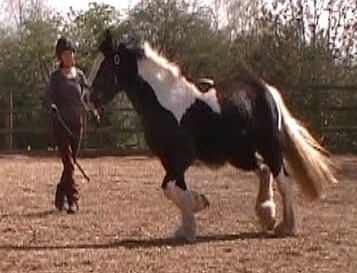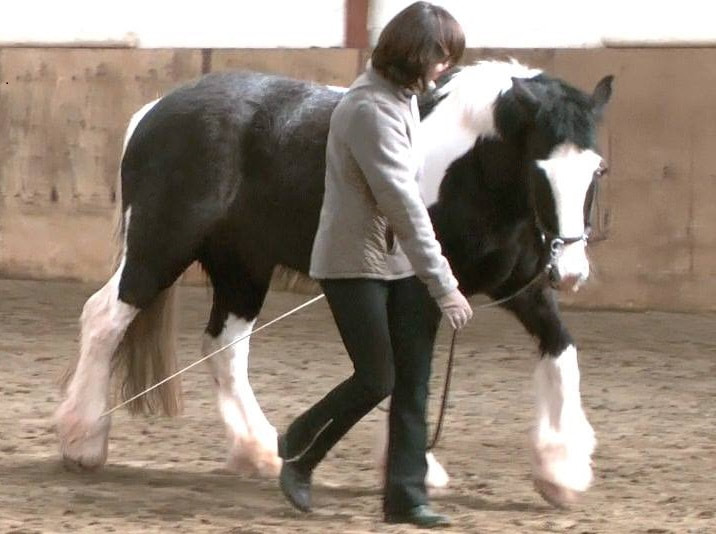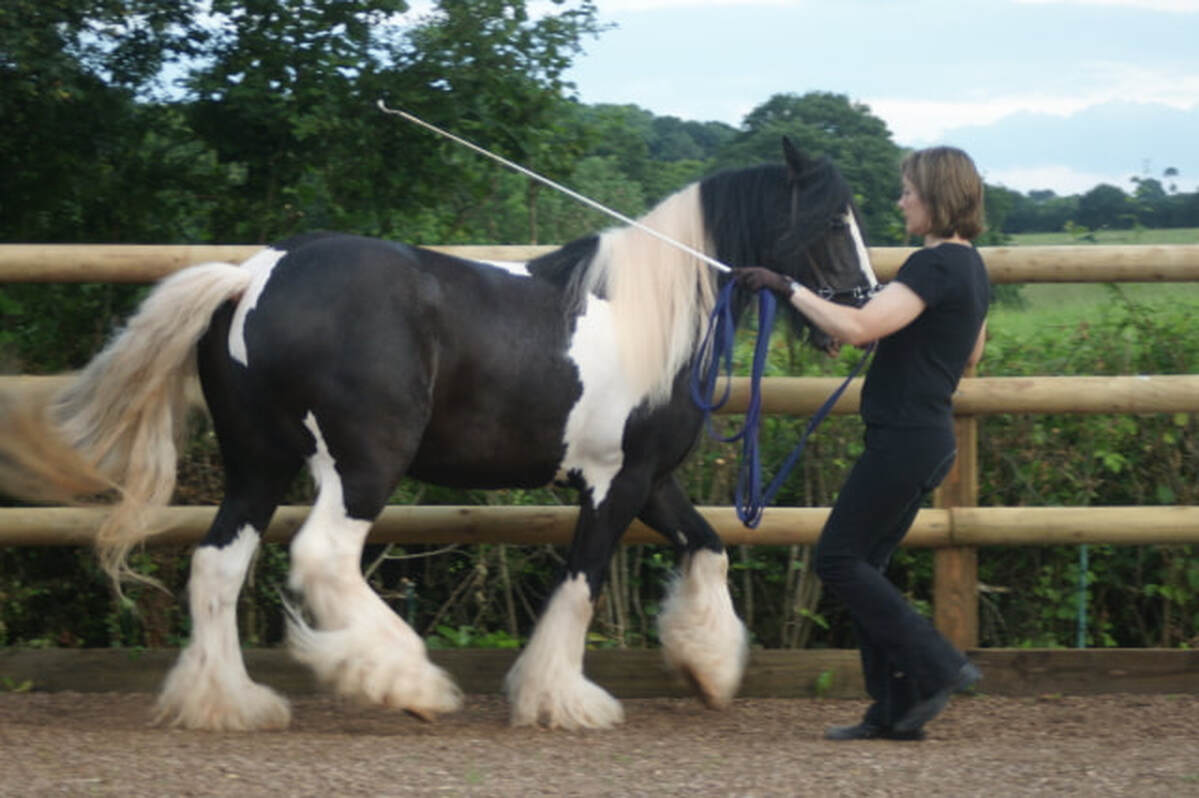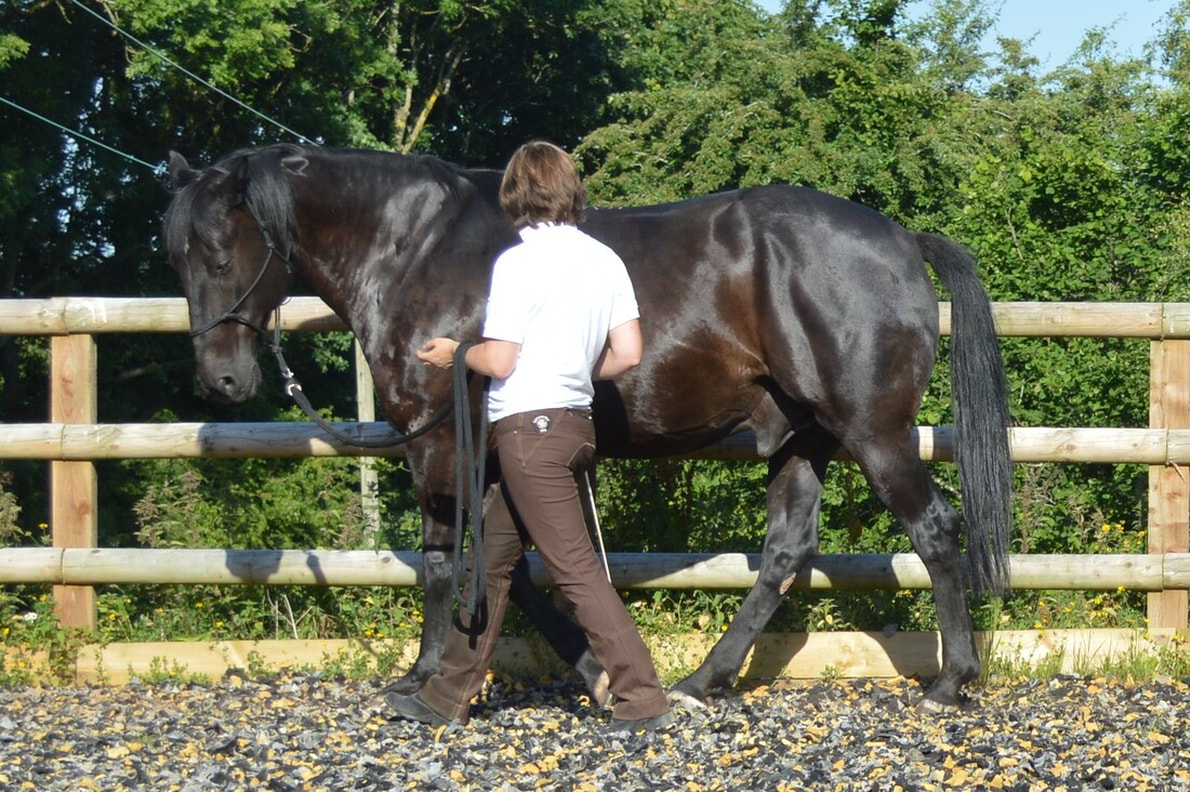Empowering you to achieve a biomechanically correct, healthy posture and an open, calm and willing mental state in your horse.
- Learn how to teach your horse to move in a balanced, healthy posture using a tried and tested step by step method.
- Learn tried and tested concepts so that you don't have to rely on a trainer.
- Train your horse in classical dressage from the ground and in the saddle.
- Longe your horse in balance without using gadgets that can cause pain and tension.
- Stop your horse pushing into your space, biting and nipping.
- Teach your horse all dressage movements with balance, suppleness, shape, tempo and rhythm.
- Bring your horse to a high mental state.
- Learn how to create a liberty connection and do all dressage exercises without tools.
Are you having behavioural problems with your horse such as:
These are all common symptoms of natural asymmetry and I can help you overcome them.
- Bucking and bronking?
- Falling in or out on a circle?
- More difficult in one direction than the other?
- Poor canter transitions?
- Leaning on the bit or hanging on one rein?
- Pulling, rushing?
- Not going forward?
These are all common symptoms of natural asymmetry and I can help you overcome them.
Are you suffering with internal struggles? And does that make you feel uncertain, frustrated, in doubt, overwhelmed?
Are you doubting yourself, feeling humiliated or confused?
If so - I get it! I have been there too, and I can help.
Are you tired of different trainers giving you conflicting advice?
Or you need help to get to the next level - or with a ST Touchstone?
Perhaps you are a Straightness Training Scholar or Mastery student feeling stuck or just looking for help to get you to the next level.
Are you doubting yourself, feeling humiliated or confused?
If so - I get it! I have been there too, and I can help.
Are you tired of different trainers giving you conflicting advice?
Or you need help to get to the next level - or with a ST Touchstone?
Perhaps you are a Straightness Training Scholar or Mastery student feeling stuck or just looking for help to get you to the next level.
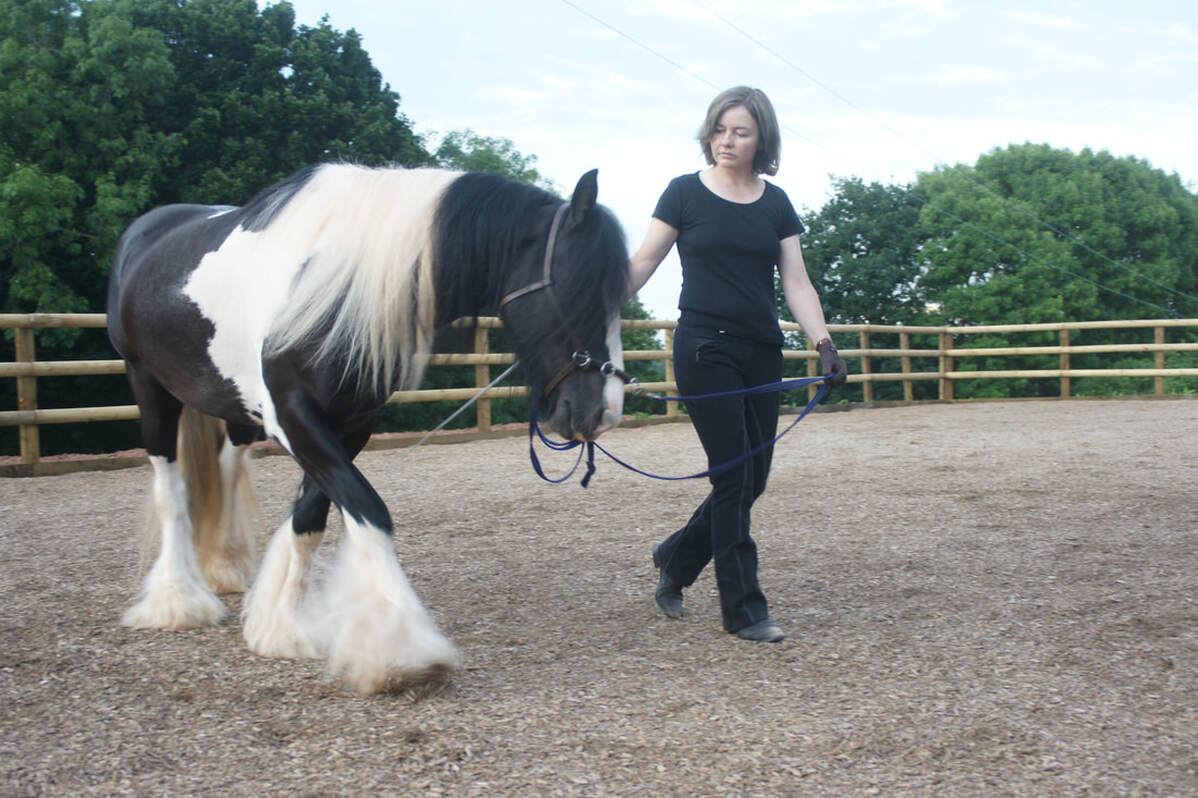 Here Moon turns on the circle, with an even bend through his body, a long topline with a forward down tendency and his weight away from his shoulders. In this picture I am a bit close but this is how we longe a horse in self carriage without any tie downs, side reins or other tools.
Here Moon turns on the circle, with an even bend through his body, a long topline with a forward down tendency and his weight away from his shoulders. In this picture I am a bit close but this is how we longe a horse in self carriage without any tie downs, side reins or other tools.
Book a free consultation and we can make a plan to get you and your horse where you want to be!
I have helped hundreds of people in the UK and all over the world to successfully address the natural asymmetry in their horse, and the physical, mental and emotional symptoms that come with it.
I use a progressive series of gymnastic exercises to develop the horse symmetrically in body and limbs.
Using these exercises regularly you can teach your horse to carry himself in balance, so that both rider and horse are moving in harmony.
The gymnastic exercises are based on the classical teachings of old riding masters and are taught using the following 5 elements:
The first step to help you get to where you want to be is to book a free consultation with me and we can set you up with a tailor made plan.
If you decide not to book a free consult, you will stay stuck! Nothing will change.
I have helped hundreds of people in the UK and all over the world to successfully address the natural asymmetry in their horse, and the physical, mental and emotional symptoms that come with it.
I use a progressive series of gymnastic exercises to develop the horse symmetrically in body and limbs.
Using these exercises regularly you can teach your horse to carry himself in balance, so that both rider and horse are moving in harmony.
The gymnastic exercises are based on the classical teachings of old riding masters and are taught using the following 5 elements:
- Groundwork
- Longing
- Work in hand
- Riding
- Liberty
The first step to help you get to where you want to be is to book a free consultation with me and we can set you up with a tailor made plan.
- STEP 1 BOOK A CALL
- STEP 2 LET'S DISCUSS A TAILORED PLAN FOR YOU
- STEP 3 LET'S HELP YOU SOLVE YOUR PROBLEM
If you decide not to book a free consult, you will stay stuck! Nothing will change.
FAQ
My horse is in rehabilitation from injury and arthritis. What can I do to help him?
My training method provides an ideal rehab programme to help a horse after an operation or injury. It is also ideal for arthritic horses and those with long term physical problems. When a horse is recovering from an injury he will tend to compensate with the other legs causing problems elsewhere in the body. You can help the horse to find his balance using controlled exercises in groundwork, avoiding the need to add the weight of a rider before the horse is ready.
I have a gypsy cob who is very pushy. Can you help me train him?
My training method is suitable for all types of horses. All breeds, including gaited horses, are able to do the training, and all types and temperaments. It can keep horses in work into old age, and it can help horses that have retired to live longer and happier lives. It is an ideal way to start a young horse in the right way, because he will learn to carry himself, and he will have the strength to carry the rider before you even back him, so the whole experience will be a very positive one.
How can I work with a horse that has mental and behavioural problems?
The horse's physical natural asymmetry can have a hugely negative effect on his mental and emotional state. My training method will help with this by bringing the horse physically into balance, but also mentally, emotionally and spiritually. It is important to the horse that the trainer is also physically, mentally, emotionally and spiritually in balance. We should cater to the horse's needs and at the same time strive to be the best trainer we can be.
I want to train my horse but prefer to ride bitless and bareback. Is that even possible?
My training method is initially taught to the horse using a cavesson, so a bit is not used at all in the beginning. A bit is really not necessary if you prefer not to use one. A cavesson will help us teach the horse to bend laterally. Later we add a curb bit to encourage the horse to lengthen his neck in collection if desired. It is encouraged to start riding using a bareback pad to allow the seat to develop. This way we can learn to feel the movement of the bending, the use of the back, the positioning of the legs, tension and relaxation better than with a saddle.
My horse is in rehabilitation from injury and arthritis. What can I do to help him?
My training method provides an ideal rehab programme to help a horse after an operation or injury. It is also ideal for arthritic horses and those with long term physical problems. When a horse is recovering from an injury he will tend to compensate with the other legs causing problems elsewhere in the body. You can help the horse to find his balance using controlled exercises in groundwork, avoiding the need to add the weight of a rider before the horse is ready.
I have a gypsy cob who is very pushy. Can you help me train him?
My training method is suitable for all types of horses. All breeds, including gaited horses, are able to do the training, and all types and temperaments. It can keep horses in work into old age, and it can help horses that have retired to live longer and happier lives. It is an ideal way to start a young horse in the right way, because he will learn to carry himself, and he will have the strength to carry the rider before you even back him, so the whole experience will be a very positive one.
How can I work with a horse that has mental and behavioural problems?
The horse's physical natural asymmetry can have a hugely negative effect on his mental and emotional state. My training method will help with this by bringing the horse physically into balance, but also mentally, emotionally and spiritually. It is important to the horse that the trainer is also physically, mentally, emotionally and spiritually in balance. We should cater to the horse's needs and at the same time strive to be the best trainer we can be.
I want to train my horse but prefer to ride bitless and bareback. Is that even possible?
My training method is initially taught to the horse using a cavesson, so a bit is not used at all in the beginning. A bit is really not necessary if you prefer not to use one. A cavesson will help us teach the horse to bend laterally. Later we add a curb bit to encourage the horse to lengthen his neck in collection if desired. It is encouraged to start riding using a bareback pad to allow the seat to develop. This way we can learn to feel the movement of the bending, the use of the back, the positioning of the legs, tension and relaxation better than with a saddle.
